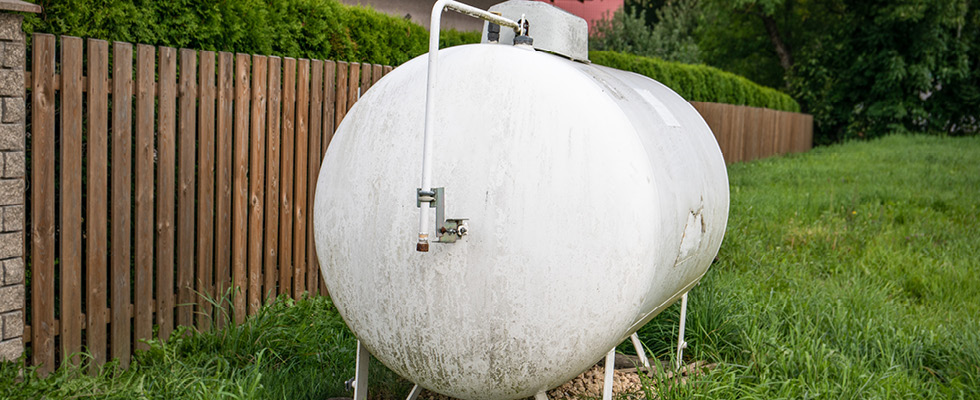
“Interruption of service” is an umbrella term that defines any circumstance where propane stops flowing from the container to the gas line to the appliance. However, there are a variety of instances that would cause propane to stop flowing and each requires a unique response from your team of propane technicians. Read this article to learn more about various types of interruptions of service (IOS) and key components for responding to these situations in a way that will keep your team safe and optimize your operational efficiency.
Interruption of Service Types
Here are some common instances where you might see interruptions of service:
- Runout/empty container: One of the most common reasons for an IOS is a gas runout. This may be caused by the customer’s increased usage or forgetting to place an order, an incorrect delivery schedule, or a faulty container monitor or gauge.
- Odor complaint: When a customer submits a propane odor complaint, the technician will need to follow company procedure for checking the system for leaks, which often includes interrupting service from the container to the appliance.
- Appliance malfunction: Occasionally, appliances may malfunction and draw more propane than they would normally need. This can throw off will-call and automatic delivery schedules and cause an IOS.
- Seasonal operation: Homeowners of seasonal properties will often turn their containers off when they leave for the season, causing an interruption of propane from the container to the gas line to the appliance.
- Regulator malfunction or replacement: When regulators reach the end of their lifespan (or require a scheduled replacement before reaching the manufacturer’s recommended lifespan), an IOS will occur when the regulator is replaced. Regulator malfunctions can also cause an IOS.
- Leak and system check: When a system is inspected for leaks or optimal operation, technicians will experience an IOS and need to put the container back in service.
- Replacement of existing gas piping: When gas piping is installed, an IOS will occur due to removing and replacing the gas lines between the container and the propane appliance.
- Put system/appliance back in service: Similarly, if the propane system or appliance is out of service and is put back in service, the gas supply will be interrupted and will need to be reengaged to allow the system to operate as it should.
- Container/appliance replacement: When a propane gas storage container is swapped out, an IOS will happen when the container is disconnected from the gas lines and the appliance. The same would apply if the propane appliance was replaced.
How to Handle Interruptions of Service
No matter the type of interruption of service, proper protocol should be followed and enforced to keep everyone safe. Here are the top three protocols every propane marketer should be sure to employ.
1. Policies & Procedures
All interruptions of service should be handled following instructions from the company’s Policies and Procedures Manual, which should clearly state the procedures that should be followed for each type of IOS. Having a written Policies and Procedures Manual is an industry best practice that is recommended to help your company operate smoothly and avoid unnecessary risk. Does your manual have a specific policy and procedure for IOS calls?
Your policy and procedure for IOS calls should cover the following:
- A comprehensive script for customer service representatives (CSRs) to use when answering interruption-of-service calls from customers
- A plan for how to handle after-hours IOS situations
- A procedure for your drivers to follow when responding to the call, including if they complete the leak check before or after fuel is added and if they lock out the container if the leak check fails
Written policies and procedures will guide your team during an interruption of service response and make handling these potentially dangerous situations much safer and easier to execute. Review and update these procedures annually prior to the season’s start.
2. Training for Employees
The next step is giving personnel proper training to perform their responsibilities appropriately. For example, your CSRs are the first line of communication with the customer. It is crucial every CSR is trained to properly handle IOS calls so they can communicate with the customer and responding drivers and service technicians efficiently. Drivers and service technicians should understand how to complete the procedures in your Policies and Procedures Manual, perform their responsibilities accordingly and document the response to the IOS situation encountered in the field.
3. Proper Documentation
Last, but not least, is the documentation for interruption of service scenarios. Your team must document the IOS response clearly and ensure the documentation is stored for your records. In the event of litigation, documentation serves as your legal protection. Having easily accessible digital documentation with photos is the best way to protect your company.
In the propane industry, approximately half of propane-related accidents are caused by DIY homeowners attempting to modify or alter their equipment. Maintaining detailed documentation of every customer location’s service history and photo documentation of container sets will also serve to protect your company in the event of an interruption of service situation resulting from homeowner modifications.
Protect Your Customers & Company With Your IOS Process
How does your company’s IOS protocol stack up? We all know how precious every minute of billable time is during the busy season. Having a streamlined interruption of service protocol in place will help your staff address, respond to and resolve these situations safely without losing valuable time. Making sure you have all three elements listed in this article in your safety program will help your team operate efficiently while protecting your customers, employees and company.


